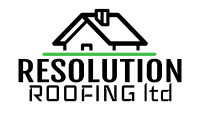Identifying Common Roofing Issues
When did you last book a roof maintenance inspection? Did you realise you should schedule roof inspections at least twice yearly and after any significant weather event? Identifying common roofing issues while they are still in the early development stages can divert the need for re-roofing and offset the chances that you will have to replace your roof prematurely.
Because your roof is your first line of defence against the elements, it is paramount that you stay on top of maintenance, repairs, re-roofing – and roof replacement as required. Regular inspections with proper documentation of any roof maintenance issues that have been uncovered – or sorted out – will allow you to plan and budget appropriately.
When do you need roof maintenance?
The structural integrity of your property – the bones – relies on the roof to protect it from moisture ingress, and roof maintenance that doesn’t get addressed can result in substantial damage to your property, even down to the foundations!
So how do you know when you need to book roof maintenance? When you have regular inspections, your roofing professional will keep an eye out for some specific signs that it’s time to repair, re-roof or replace. We have compiled a list here to help you understand what we look out for when assessing your roof.
We don’t recommend you inspect your roof or undertake maintenance yourself; it’s hazardous and requires specialised knowledge, skills and equipment – call Resolution Roofing for a chat.
Flashing Replacement
Flashing is a crucial part of the makeup of your roof as it prevents water from seeping into your property. Flashing is generally constructed from thin metal strips and placed around the edges of vents, chimneys, and anywhere else the roof’s surface has been penetrated. Checking the condition of your flashing is an essential part of your roof maintenance schedule.
Flashing will need to be repaired or replaced when it starts to deteriorate – this is generally down to the effects of the weather. It can rust, crack or gape, and it will begin to let water in as it ages. This can be catastrophic if left unchecked as water can soak into your insulation, sub-roof, ceiling and down into the interior of your property.
Rust & Corrosion
We will check for rust and corrosion when we inspect your roof to identify any issues needing roof maintenance. As moisture hits metal, it causes a chemical reaction called oxidisation, which will cause the metal to deteriorate over time. When we lay long-run roofing for our clients, we only use products thoroughly treated against oxidisation and rust. We choose Coloursteel and Colorcote as they are designed to withstand the harsh NZ climate and resist rot, mould, corrosion, and insect damage.
As with most common roofing issues, the key to rust and corrosion is to catch and treat them early, leading back to regular inspections’ importance. Rust and corrosion will eat holes in your roof if not dealt with swiftly.
Deterioration of Sealants
Sealants are used to create a watertight barrier around roof edges, vents and any other spots that may be prone to leaks. Moisture, temperature fluctuations and UV rays all contribute to the breakdown of sealants over time. As they break down, gaps can form, allowing water to penetrate and damage the underlying roofing materials. Regular inspections of sealants and timely reapplication help maintain their effectiveness and prevent water infiltration.
Damaged Tiles
It only takes one damaged tile to wreak havoc. Tiles get damaged due to age, severe weather, accumulation of debris and falling branches. Besides keeping the trees around your property cut back, your tiled roof should be cleaned regularly. A build-up of leaves and debris will create moisture on your roof, and you may even end up with pools of water which can cause your tiles to deteriorate more rapidly.
Missing or broken tiles can lead to leaks, moisture ingressing into your insulation and UV damage on the exposed underlying areas of your roof. If you discover your tile roof is beyond repair, Resolution Roofing is available for conversions to long-run steel.
Mould Removal
Moisture ingress and mould go hand in hand. Organic debris collecting on your roof is a sure-fire recipe for the growth of mould, and once there are gaps in your roof, that mould can enter your home and snowball as the interior heat rises through your roof space.
Mould can be dangerous for the health of anyone who spends time in your residential or commercial building, and once it takes hold, it can be tricky to eradicate. As with all these common roofing issues, the key with mould is vigilance – early treatment with targeted techniques and products is paramount. Mould isn’t just unhealthy; it eventually becomes rot and can eat its way through your property.
Get in Touch
Now have a good understanding of the common roofing issues that require swift attention – remember, time is of the essence when it comes to halting the escalation of these types of issues.
Contact us today to book a roof inspection or to discuss a long-run roofing or cladding installation.
